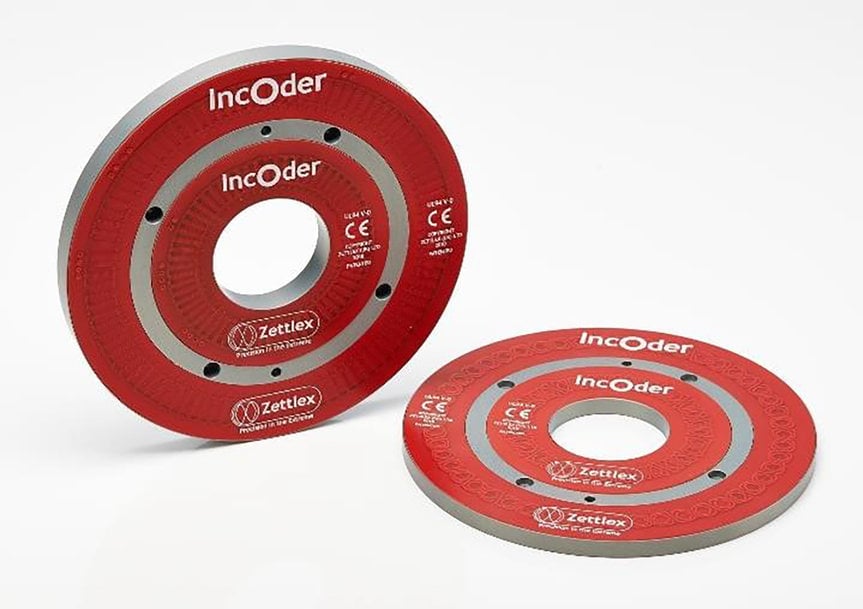www.ptreview.co.uk
07
'24
Written on Modified on
Specifying a position sensor for safety requirements
In a motion system, position sensors can be crucial to ensure safety. Gerard Bush, engineer at motion specialist INMOCO, explains.

Particularly in applications working in close proximity to humans, such as surgical robots, or even where sensitive equipment has to be protected, position feedback is key. To ensure a machine build and integration that enables safe and reliable operation, there are a number of key design considerations that OEM engineers need to consider when specifying a position sensor.
Position sensors, ranging from transmitters and transducers through to devices such as encoders, can be a vital aspect of ensuring the safety rating of a motion application. Measuring angle, and even linear displacement, as well as angular or linear speed, these devices generate an electrical signal dependent on the deviation from the set-point. A ‘failure’ signal could be generated by a cessation of the output signal, or an incorrect position output. Most seriously, failure could also include a reading that is actually reporting an incorrect position.
While many applications have a ‘safety relevant’ consideration, for those with ‘safety critical’ requirements, a failure in position feedback can have significant implications. As a result, when specifying a position sensor, it’s key to consider the importance of its feedback within the safety spectrum. As the importance of safety moves towards a critical level, the most appropriate sensor configuration and specification advances to suit.
Safety sensor configuration
The first level of position safety can be introduced with a sensor that can self-diagnose. In a built-in test, if the sensor fails one or more of its internal diagnostic checks, it will output an error signal that could take a variety of forms. Devices such as inductive encoders with digital communication protocol outputs like SSI or SPI, can also be configured to carry an error flag if necessary.
Using built-in-tests, sensors continue to operate but their output contains a warning. Error flags generated by these internally referenced sensors should be used to trigger a fail-safe state in the wider application.
As safety relevance increases, sensors should also receive external inputs. For example, taking a ship’s microwave satellite communications system, its antenna should move within a defined arc, protecting personnel and equipment from microwave energy. The antennas are driven by a motor and gearbox, and an encoder pair can be used to measure the angle of the gearbox output shaft, as well as the output of the motor shaft into the gearbox. If the two measurements differ, the antenna could be set to enter a fail-safe condition.
Adding redundancy
Redundant or duplex feedback arrangements can further increase safety by involving two sensors to measure the same parameter. Surgical robots, for example, often need feedback redundancy, to ensure the precise rotation angle of a motor shaft for the control of limbs and end effectors.
A single encoder can involve two sensors, one of which is electrically redundant, with both feedback devices built into a common mechanical housing. Here, each sensor operates independently, however the inner and outer ring sensors differ according to their mode of electrical feedback. For example, the inner sensor ring might offer incremental measurement, while the outer can provide an absolute digital signal. The advantage of a configuration involving two different feedback types is that it helps to prevent common failure modes.
When one or more sensors are used together, if one of the devices shows a different reading, it may not be immediately apparent which one is incorrect. Therefore, the host system should be engineered so it continues to operate only if the two sensors agree within reasonable bounds. If not, the system should switch to its fail-safe state.
To extend safety further still, mechanical redundancy can also be added, and devices can even be configured in triplicate. With a triplex position feedback arrangement, the system can be designed so that if two of the three sensors agree within reasonable bounds, the equipment is able to operate.
Position sensor specification
Combined with ensuring that the sensor achieves sufficient resolution, as long as safety is required, reliability will also be essential. For applications in environments that have the potential to involve any form of liquid or physical matter dispersal, from a surgical operating theatre to a ship’s deck, durability is crucial too. Non-contact, inductive sensors, like Celera Motion’s IncOder feedback devices, are an extremely reliable form of measurement as they are not subject to failure modes caused by splashes or particles.
INMOCO’s engineers are able to advise OEMs on the integration of position feedback devices and can specify the right sensor, whether the demands are to optimise resolution, ensure durability, or combine extended user needs. To ensure precision and safety across wider machine or application requirements, INMOCO can also provide design guidance on motion solution considerations, from the motor through to the controller.
www.inmoco.com

